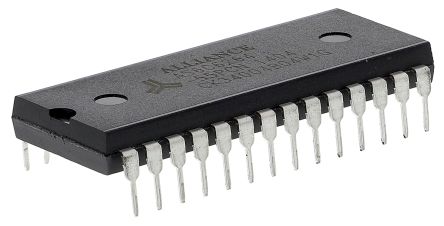RAM
or Random Access Memory is your system's short-term memory that can be
read and changed in any order. It stores the information your computer
is actively using so it can be accessed quickly. RAM is much faster than
your typical storage solution whether it be a Hard Disk Drive (HDD) or a
Solid State Drive (SSD). A typical 7200 RPM HDD will deliver a
read/write speed of 80-160MB/s, a typical SSD will deliver read/write
speed of between 200 MB/s to 550 MB/s.
RAM is much, much, much faster than even a fast SSD, as DDR3 RAM can have read and write speeds of 6GB/s and faster (17GB/s), therefore more RAM allows you to have more applications and documents open.








:max_bytes(150000):strip_icc()/crucial-server-ddr4-rdimm-2133-16gb-kit-2-56a1b4a83df78cf7726d3c19.png)


RAM is much, much, much faster than even a fast SSD, as DDR3 RAM can have read and write speeds of 6GB/s and faster (17GB/s), therefore more RAM allows you to have more applications and documents open.
Generations Of RAM
DDR - 1st Gen
DDR2 - 2nd Gen
DDR3 - 3rd Gen
DDR4 - 4th Gen
DDR5 (Expected launch this year)
Types Of RAM
Static RAM (SRAM)
Dynamic RAM (DRAM)
Synchronous Dynamic RAM (SDRAM)
Single Data Rate Synchronous Dynamic
RAM (SDR SDRAM)
Double Data Rate Synchronous Dynamic
RAM (DDR SDRAM, DDR2, DDR3, DDR4)
Graphics Double Data Rate Synchronous
Dynamic RAM (GDDR SDRAM, GDDR2, GDDR3, GDDR4, GDDR5)
Flash Memory
Static RAM (SRAM)
Time in Market - 1990s - Present
Products using SRAM: Digital Cameras, Routers, Printers, LCD Screens
SRAM
requires a constant power flow in order to function, because of
continuous power, SRAM doesn't need to be 'refreshed' to remember the
data being stored. This is why SRAM is Static. However SRAM is a
volatile memory, which means all the data will be lost once power is
lost.

Dynamic RAM (DRAM)
Time in Market - 1970s - Mid 1990s
Products using DRAM: Video Game Consoles, Networking Hardware
DRAM
requires a periodic refresh of power in order to store data. The
capacitor in DRAM gradually lose power. No Power = Data Lost. DRAM is also a volatile memory, which means all the data will be lost once power is lost.

Synchronous Dynamic RAM (SDRAM)
Time in Market - 1933 - Present
Products that use SDRAM: Computer Memory, Video Game Console
SDRAM
is a classification of DRAM that operates in sync with the CPU clock,
which means that it waits for the clock signal before responding to data
input. By contrast, DRAM is asynchronous, which means it responds
immediately to data input. But the benefit of synchronous is that a CPU
can process overlapping instructions in parallel, also known as
pipelining - the ability to receive/read a new instruction before the
previous instruction has been fully resolved/written.

Single Data Rate Synchronous Dynamic RAM (SDR SDRAM)
Time in Market - 1993 - Present
Products that use SDR SDRAM: Computer Memory, Video Game Console
SDR SDRAM is the expanded term for SDRAM.
DDR SDRAM is essentially the second-generation of SDR SDRAM

Double Data Rate Synchronous Dynamic RAM (DDR SDRAM, DDR2, DDR3, DDR4)
Time in Market - 2000 - Present
Products that use SDRAM: Computer Memory
DDR
SDRAM (AKA DDR) operates like SDRAM but twice as fast. DDR SDRAM is
capable of processing 2 reads and 2 writes per clock cycle. Although
similar in function, DDR SDRAM has physical difference (184 pins and a
single notch on connecter) VS SDRAM (168 pins and 2 notches on the
connector). DDR SDRAM also works at a lower voltage (2.5 V from 3.3 V),
preventing backwards compatibility with SDRAM.

- DDR2 is the second generation of DDR. While still doing the same work it can do them faster because of its higher clock speeds. Standard (not Overclocked) DDR memory modules top out at 200 MHz, whereas standard DD2 memory modules top out at 533 MHz. DDR2 runs at a lower voltage (1.8 V) with more pins (240).

- DDR3 is the third generation of DDR. While improving performance over DDR2 through more advanced signal processing (reliability), greater memory capacity, lower power consumption (1.5V), and higher standard clock speeds (up to 800 MHz). Although DDR3 share the same numbers of pins with DDR2 (240), all other aspects prevent backwards compatibility.

- DDR4 is the fourth generation of DDR. While improving performance over DDR3 through more advanced signal processing (reliability), even greater memory capacity, even lower power consumption (1.2 V), and higher standard clock speeds (up to 1600 MHz). DDR4 uses a 288-pin configuration, which prevents backwards compatibility.
:max_bytes(150000):strip_icc()/crucial-server-ddr4-rdimm-2133-16gb-kit-2-56a1b4a83df78cf7726d3c19.png)
Graphics Double Data Rate Synchronous Dynamic RAM (GDDR SDRAM, GDDR2, GDDR3, GDDR4, GDDR5, GDDR6)
Time in Market - 2003 - present
Products using GDDR SDRAM: Video Graphics Card, some Tablets
GDDR
SDRAM is a type of DDR that is specifically designed for video graphics
rendering, typically in conjunction with a dedicated GPU (Graphics
Processing Unit) on a video card. Modern Games are known to push the GPU
to its maximum, often requiring high specs with the best video card
with it (especially if using 720, 1080p or higher resolution displays). Like
DDR has its own evolutionary line that is improving performance and
lower power consumption: GDDR, GDDR2, GDDR3, GDDR4, GDDR5 and GDDR6.

Flash Memory
Time in Market: 1984 - Present
Products using Flash Memory: Digital Cameras, Smartphones, Tablets, Handheld Gaming Systems, etc.
Flash
Memory is a type of non-volatile storage medium that retains all data
after power has been cut off. Despite the name, flash memory is closer
to SSDs than to RAM.

Some links to help you learn more:









0 Comments